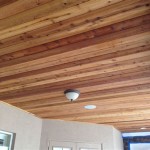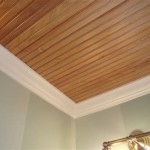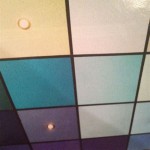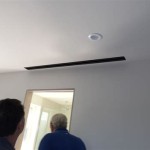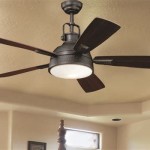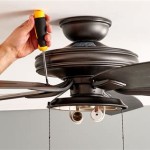Types of Ceiling Fans and Their Benefits
Ceiling fans are more than just decorative additions to a room; they are functional appliances that offer a variety of benefits. Choosing the right type of ceiling fan can significantly impact a room's comfort, style, and energy efficiency. This article explores the different types of ceiling fans available and the advantages they offer.
Standard Ceiling Fans
Standard ceiling fans are the most common type found in homes. They typically feature three to five blades and come in a wide range of styles, finishes, and sizes. These fans are versatile and suitable for most rooms, offering effective air circulation and contributing to a comfortable indoor environment.
Low-Profile Ceiling Fans / Hugger Ceiling Fans
Low-profile or hugger ceiling fans are designed for rooms with low ceilings. They are mounted flush to the ceiling, eliminating the need for a downrod. This design maximizes headroom and prevents interference with furniture or tall individuals. Low-profile fans are an excellent choice for smaller rooms or spaces with limited vertical clearance.
Dual-Motor Ceiling Fans
Dual-motor ceiling fans offer enhanced airflow and control compared to standard fans. They feature two motors that can operate independently or together, allowing for customized air circulation patterns. These fans are ideal for larger rooms or open-concept spaces where directional airflow is desired.
Remote-Controlled Ceiling Fans
Remote-controlled ceiling fans offer convenience and accessibility. Users can adjust the fan speed, turn the light on or off, and even reverse the fan direction without having to reach a wall switch. This feature is particularly beneficial for high ceilings or rooms with limited accessibility.
Energy-Star Certified Ceiling Fans
Energy Star-certified ceiling fans are designed for optimal energy efficiency. They utilize advanced motor technology and blade design to minimize energy consumption while maximizing airflow. Choosing an Energy Star-certified fan can help reduce electricity bills and contribute to a more sustainable home environment.
Outdoor Ceiling Fans
Outdoor ceiling fans are specifically designed to withstand the elements. They are constructed with weather-resistant materials and finishes to protect against moisture, humidity, and extreme temperatures. Outdoor fans can create a comfortable breeze on patios, porches, and other outdoor living spaces, extending their usability.
Ceiling Fans with Lights
Ceiling fans with integrated lighting fixtures offer a convenient and space-saving solution for illuminating a room. These fans combine the functionality of a ceiling fan and a light fixture, eliminating the need for separate installations. They are available in various styles and finishes to complement any decor.
Smart Ceiling Fans
Smart ceiling fans integrate with smart home technology, allowing users to control them via smartphone apps, voice assistants, or home automation systems. Smart features often include scheduling, remote access, and integration with other smart devices, providing greater control and convenience.
Benefits of Using Ceiling Fans
Ceiling fans offer a multitude of benefits beyond simply circulating air. These benefits contribute to increased comfort, energy savings, and improved indoor environments.
Improved Air Circulation
Ceiling fans effectively circulate air throughout a room, creating a consistent and comfortable temperature. They help distribute warm air during winter and cool air during summer, reducing temperature stratification and enhancing overall comfort.
Energy Savings in Summer and Winter
Ceiling fans can significantly reduce energy consumption by supplementing or replacing air conditioning in the summer. By circulating cooler air, they allow occupants to raise the thermostat setting by several degrees without sacrificing comfort. In winter, they can help redistribute warm air trapped near the ceiling, reducing the need for excessive heating.
Enhanced Comfort
The gentle breeze created by a ceiling fan provides a cooling effect, making a room feel more comfortable even in warm temperatures. This increased airflow can help reduce stuffiness and improve indoor air quality, creating a more pleasant living environment.
Cost-Effective Cooling Solution
Compared to air conditioning, ceiling fans are a significantly more cost-effective cooling solution. They consume far less energy and require less maintenance, resulting in substantial savings on electricity bills over time.
Versatile Design Options
Ceiling fans are available in a wide range of styles, finishes, and sizes to complement any decor. From traditional to contemporary, there is a ceiling fan to suit every aesthetic preference and enhance the overall look of a room.
Improved Indoor Air Quality
By circulating air, ceiling fans can help improve indoor air quality by reducing stagnant air and distributing fresh air throughout the room. This can help alleviate the concentration of airborne pollutants and allergens, contributing to a healthier indoor environment.
Quiet Operation
Modern ceiling fans are designed for quiet operation, minimizing noise disruption and creating a peaceful atmosphere. This makes them ideal for bedrooms, living rooms, and other spaces where quiet is essential.
Increased Property Value
Installing ceiling fans can potentially increase the value of a property. They are considered desirable features by many homebuyers, enhancing the marketability and perceived value of a home.

Fans Of All Types Ceiling Personal Table Exhaust And Many More Goldmedal

What Is Bldc Ceiling Fan And How It Works

Finding The Best Energy Efficient Fans For Your Home

Ppt What Are The Diffe Types Of Ceiling Fans Powerpoint Presentation Id 7517155

16 Best Ceiling Fans For Extra Airflow In 2024

What Is Bldc Ceiling Fan And How It Works

How To Choose A Ceiling Fan Size Style Hunter

What Size Ceiling Fan Do You Need For Your Room Dan S City Fans Parts Accessories

Ceiling Fan Motor Types Ac Vs Dc Lights Com

Selecting Ceiling Fan Blade Type Things To Know Rovert Lighting
Related Posts

